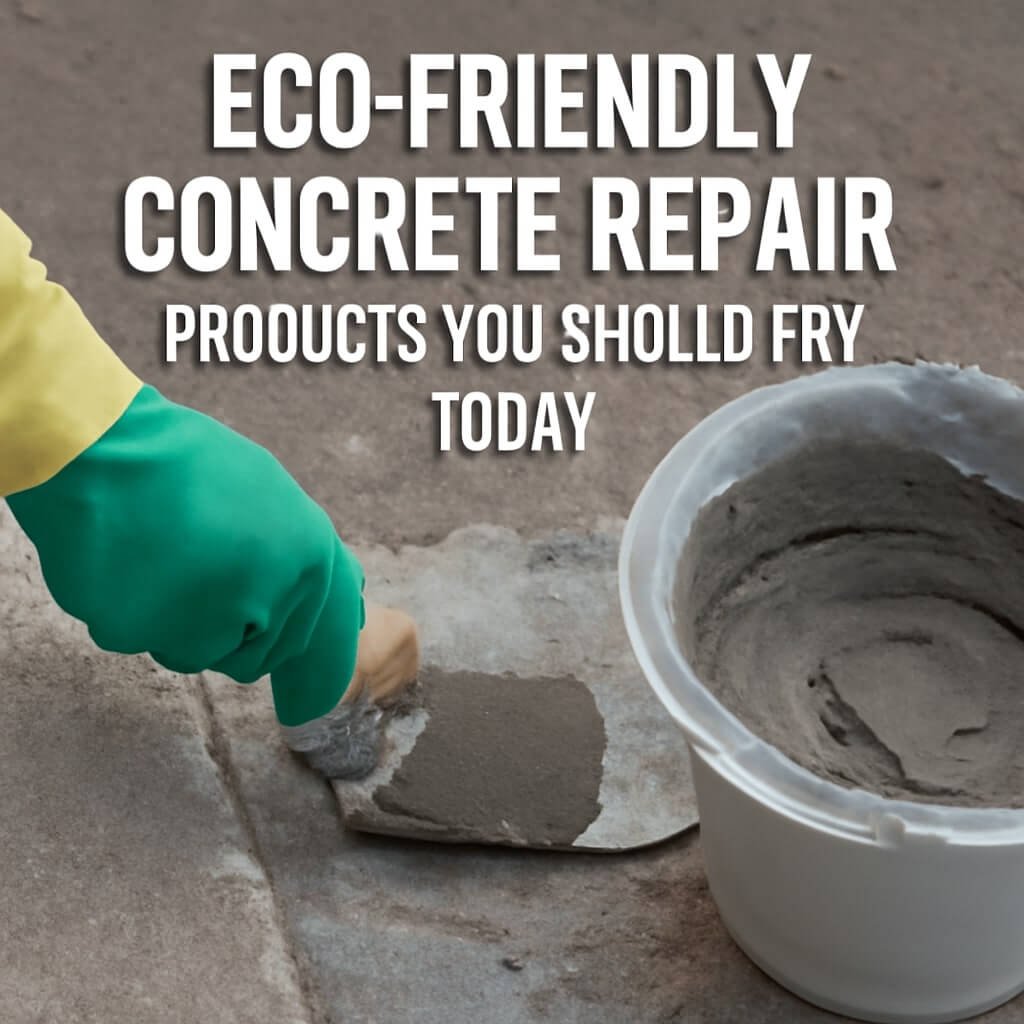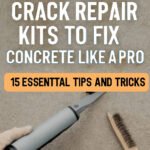The construction industry is undergoing a green revolution, and concrete repair is no exception. Whether you’re patching a driveway or restoring a commercial slab, eco-friendly concrete repair products offer durable, sustainable solutions without compromising quality. As environmental regulations tighten and consumer awareness grows, using green materials is becoming the gold standard.
Why Eco-Friendly Matters in Concrete Repair
Traditional concrete repair materials often contain high levels of volatile organic compounds (VOCs), consume large amounts of energy, and contribute to landfill waste. Eco-friendly options reduce these impacts by using recycled content, natural binders, and cleaner manufacturing processes. Choosing green solutions also aligns with certification programs like LEED, which reward sustainability efforts in construction and remodeling.
Understanding the Environmental Impact of Traditional Concrete Repair
Traditional concrete patching compounds and sealers may do the job, but they leave a heavy carbon footprint. Consider the following:
- Cement production alone contributes nearly 8% of global CO2 emissions.
- VOCs in conventional sealers degrade air quality.
- Non-recyclable repair waste often ends up in landfills.
Shifting to sustainable alternatives is not just a trend—it’s a necessity.
Key Characteristics of Eco-Friendly Repair Products
What sets eco-friendly concrete repair materials apart? Look for these key traits:
- Low VOC content for better indoor and outdoor air quality
- Recycled or bio-based ingredients that reduce reliance on virgin resources
- Permeability to improve stormwater management
- Durability and longevity to minimize future repairs
- Energy-efficient production and minimal packaging waste
These attributes make sustainable repair products a win-win for the environment and your wallet.
Top 7 Eco-Friendly Concrete Repair Products You Should Try
Here are seven standout options that prove green materials can be tough, effective, and cost-efficient.
1. Geopolymer Concrete Mixes
Geopolymer mixes are made using industrial by-products like fly ash or slag, replacing traditional Portland cement. These alternatives:
- Reduce CO2 emissions by up to 80%
- Offer superior resistance to chemicals and fire
- Set faster and last longer
They’re ideal for infrastructure repairs where strength and sustainability matter most.
2. Low-VOC Concrete Sealers
These water-based or bio-based sealers:
- Protect surfaces from moisture and stains
- Emit fewer harmful fumes
- Dry quickly and are easy to apply
Best suited for residential driveways, patios, and indoor concrete surfaces.
3. Recycled Aggregate Concrete Patches
Instead of using new crushed stone, these patches include recycled concrete or glass:
- Cuts down on landfill waste
- Maintains structural integrity
- Often more cost-effective
They’re great for pothole repair or filling surface cracks.
4. Bio-Based Epoxy Resins
Derived from plants like soybeans or castor oil, these resins:
- Are non-toxic and biodegradable
- Provide strong bonding and waterproofing
- Work well for structural bonding or coating applications
Ideal for vertical and horizontal repairs in green-certified buildings.
5. Permeable Concrete Solutions
This “pervious” concrete allows water to pass through, helping manage stormwater and reduce runoff:
- Prevents erosion
- Recharges groundwater
- Reduces urban heat island effect
Best used for walkways, driveways, and parking lots.
6. Lime-Based Mortars
Lime has been used for centuries and is making a comeback due to its eco-benefits:
- Absorbs CO2 as it cures
- Highly breathable and flexible
- Perfect for historic restorations
Especially useful for masonry joints and heritage structures.
7. Photocatalytic Concrete Overlays
These high-tech surfaces contain titanium dioxide, which reacts with sunlight to break down pollutants:
- Keeps surfaces cleaner
- Purifies air around buildings
- Adds a self-cleaning property
Great for urban environments with high traffic pollution.
How to Choose the Right Eco-Friendly Product for Your Project
To select the best green repair product, consider:
- Location (indoor vs. outdoor)
- Purpose (load-bearing vs. aesthetic)
- Climate conditions (wet, hot, freeze-thaw zones)
- Material compatibility with existing concrete
Always consult the manufacturer’s specs and do a small test patch.
Case Studies: Eco-Friendly Repairs in Action
Municipal Sidewalk Restoration: A city replaced worn sidewalks using permeable concrete and achieved a 30% reduction in stormwater runoff.
Warehouse Floor Patching: A logistics center used geopolymer patching compounds, reducing downtime and emissions compared to traditional cement.
Historic Church Repairs: Lime-based mortars preserved aesthetic appeal while offering breathable, long-lasting repairs.
Benefits of Going Green with Concrete Repair
Switching to sustainable products delivers both environmental and practical rewards:
- Lower emissions
- Healthier indoor air quality
- Reduced maintenance over time
- Positive branding and community goodwill
- Contribution to green certification credits
Common Myths About Sustainable Repair Solutions
Myth 1: “Eco-friendly means less durable.”
Reality: Most green products offer equal or better performance than conventional options.
Myth 2: “They’re too expensive.”
Reality: Long-term savings often outweigh the initial investment.
Myth 3: “They’re only for big projects.”
Reality: Many are ideal for DIY or small-scale jobs too.
Challenges in Switching to Eco-Friendly Alternatives
While the shift is beneficial, it’s not always seamless:
- Availability in local markets can be limited
- Learning curves for application methods
- Regulatory approval in some regions can delay use
Education and awareness are key to wider adoption.
Best Practices for Application and Maintenance
- Follow manufacturer’s instructions to the letter
- Use compatible tools and surfaces
- Apply in suitable weather conditions
- Ensure proper curing and aftercare
- Schedule periodic maintenance checks
These steps ensure long-lasting results and maximize the benefits of eco-friendly materials.
FAQs
1. Are eco-friendly concrete repair products as durable as traditional ones?
2. Can I use sustainable repair products for DIY home projects?
3. Are there eco-friendly options for repairing colored or decorative concrete?
4. Will using these products help with LEED certification?
5. Do green repair products cost more than regular ones?
6. Where can I dispose of leftover eco-friendly concrete materials?
Conclusion
Eco-friendly concrete repair products are more than a green trend—they’re the future of sustainable building. From permeable pavers to recycled patches, today’s solutions offer the performance and durability needed for long-term results, all while protecting the planet. By switching to environmentally responsible materials, you’re making a lasting investment in your property and the Earth.









